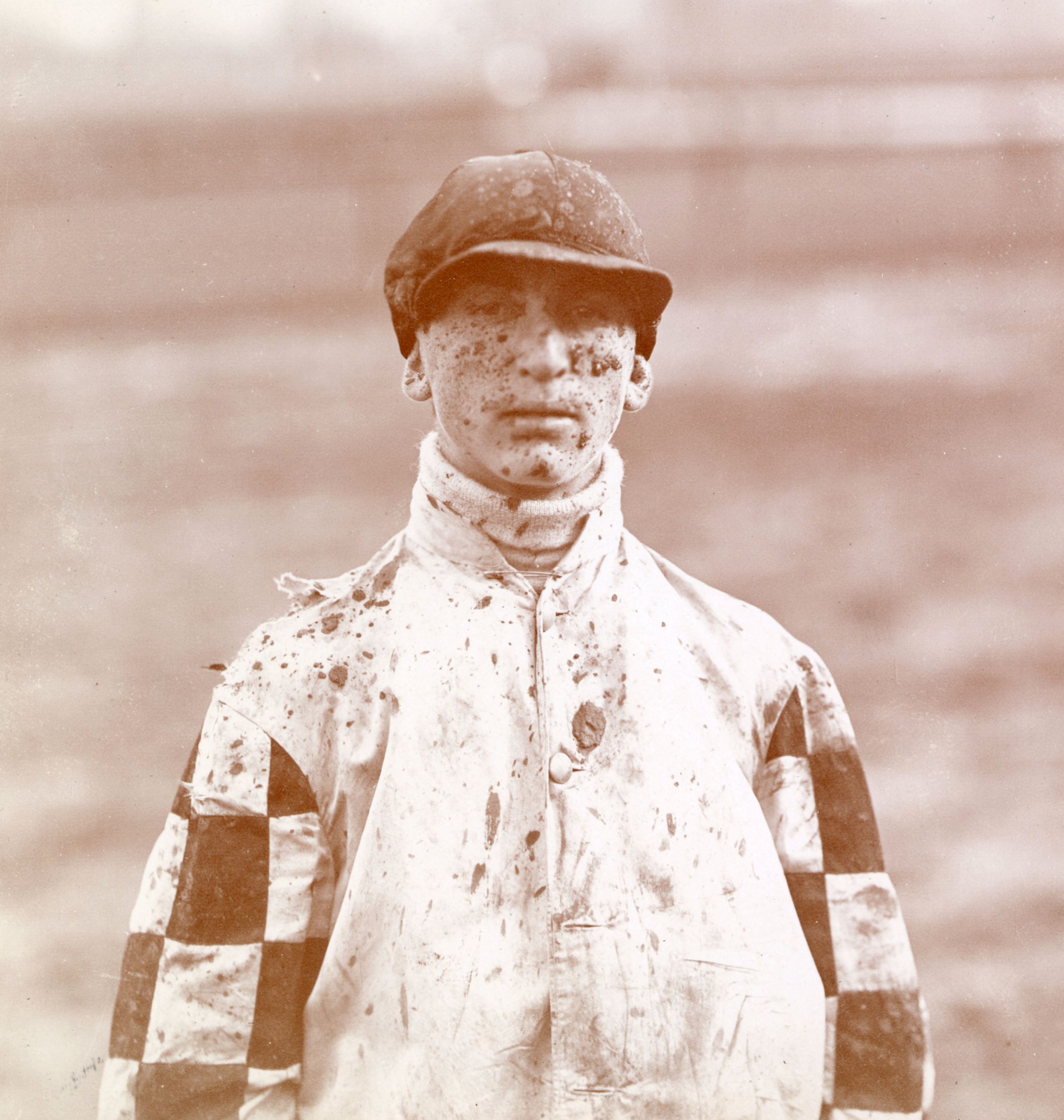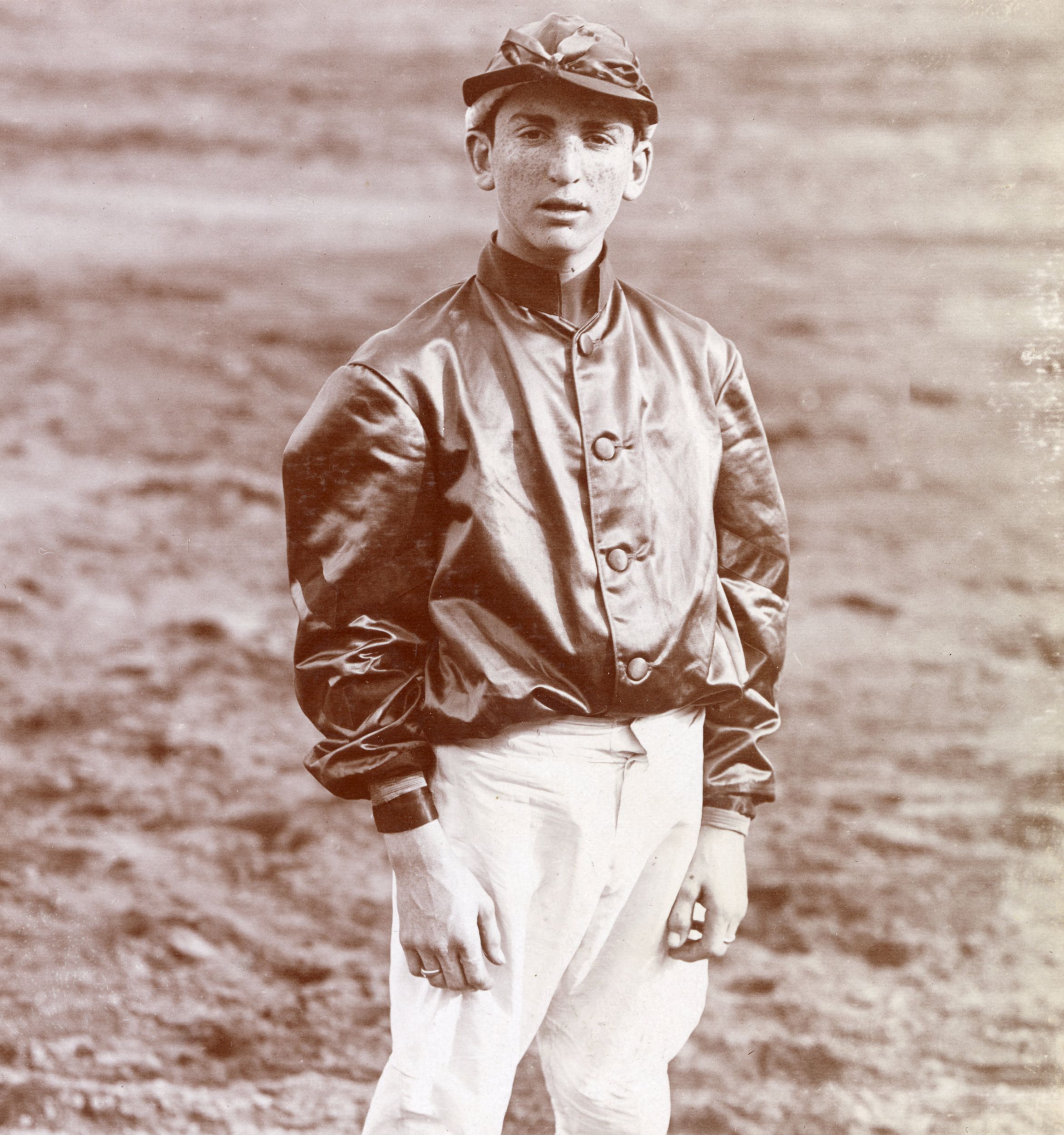Walter Miller: A flash of lightning

Walter Miller’s reign as America’s top jockey was a brief one, but few have ever done it better
By Brien Bouyea
Hall of Fame and Communications Director
At the age of 16, Walter Miller was without question the greatest jockey in America. By the time he was 20, however, Miller’s meteoric career was all but finished. Although his run of dominance was fleeting, Miller made a significant enough historical impression to earn inclusion in the National Museum of Racing’s inaugural Hall of Fame class in 1955.
Born in 1890 in Brooklyn, New York, Miller first arrived at the races in 1904 at the old Benning track in Washington, D.C. At 5-foot-8, Miller was tall for his profession, but he used his attributes — rare strength, athleticism, and keen observation — to his advantage. He was able to get his mounts away quickly and keep them in hand. In the stretch, Miller’s powerful finishing techniques were peerless and led to numerous victories that would have been impossible for other riders to attain.
Miller was an immediate sensation, attracting the attention of Hall of Fame jockey James McLaughlin, who served as a mentor to the teenage rider. McLaughlin fine-tuned Miller’s raw ability and taught him subtle tricks of the trade. Miller quickly developed and the results were remarkable. By the fall of 1904, Miller was in great demand and signed to ride in California for the stable of millionaire W. A. Stanton, whose trainers were Sam Doggett and the up-and-coming James “Sunny Jim” Fitzsimmons. Like McLaughlin, Fitzsimmons was enamored with Miller’s talent and became his agent through most of his American riding career.
“Miller’s great success was due in large part to his ability to get his mount away from the post on top,” Fitzsimmons said. “To average racegoers, his post riding was uncanny, but I was his manager at the time and it was not a mystery to me. In fact, I had quite a bit to do with his quick getaways.
“I suggested he studied the starter as well as his horse. He accepted the suggestion and soon learned it was profitable. After getting his mount straightened out and quiet behind the barrier webbing in use at that time, he studied every movement of the starter, the slightest twists or nods of his head, the tightening or relaxing of his jaws, the blinking of his eyes, movements of his lips, hands or feet, and his facial expressions.
“Within a short time he learned when the starts would be made and was off without an instant’s delay. Veteran starters wondered how Miller was able to ‘beat’ the gate so frequently. They said they did not know how or why he was able to anticipate the starts. One official at the gate told me he often made poor starts by trying to stop Miller’s getaways.”
Miller returned to the eastern tracks in the spring of 1905 and won on 178 of his 888 mounts (20 percent) that year. The following year, he produced one of greatest years of any jockey in the history of the game. Miller amazed the sports world when he won on an astonishing 388 of his 1,384 mounts (28 percent) in 1906. No other rider had ever won 300 in a single year. Miller’s wins that year included the Preakness Stakes with Whimsical. He also won the Alabama, Brighton Mile, Champagne, Edgemere Handicap, Excelsior Handicap, Matron, National Stallion, Toboggan Handicap, and Travers, among others. That summer, Miller won five consecutive races on a single card at Brighton Beach and earlier in the year won eight in a row during a two-day period at Benning.
In 1907, Miller had another phenomenal year in the irons, again topping the North American standings by winning with 334 of his 1,194 mounts (28 percent). Among his many highlights were 11 victories aboard James R. Keene’s undefeated Hall of Famer Colin, including 10 stakes. Colin was Horse of the Year and Champion 2-Year-Old Male that year. Miller was also the regular rider of the 1907 Champion 3-Year-Old Male and Hall of Famer Peter Pan, also from the mighty Keene stable. A quarter-century passed until another rider, Hall of Famer Jack Westrope, surpassed 300 wins in a year in 1933.
Miller continued to succeed into 1908, although not at the unprecedented heights of the previous two years. He won on 194 of his 870 mounts (22 percent), but increasing weight began to take a toll on his riding, as did several suspensions for rough riding. Miller’s career in America was abruptly done at the end of the season. He was struggling to make weight and his license was tabled in 1909 because of an “unresolved incident” at a California track, according to the New York Times. From 1905 through 1908, Miller won a remarkable 1,094 races from 4,336 mounts (25.2 percent).
Looking to extend his time in the saddle, Miller moved his tack to Europe, where he could compete at higher weights. He rode with mixed success in Austria, England, and Germany, notably winning the Berlin Grand Prix, before returning to the United States in 1912. He never rode again.
Details of Miller’s post-racing career are scant. He was reportedly playing semi-professional baseball in California in 1918 (Miller also had a tryout with the New York Giants) and for a time owned a haberdashery business in New York City.
“The thing about Walter was that he was a natural athlete,” Fitzsimmons said. “I used to have to go across the street from the track to take him out of a baseball game so he could ride his horses.”
Miller’s 388 wins in 1906 stood as the single-year record until matched by Hall of Famer Bill Shoemaker and Joe Culmone in 1950. Two years later, Anthony DeSpirito set a new standard with 390 wins.
In 1955, Miller was one of a dozen jockeys inducted into the National Museum of Racing’s first Hall of Fame class. His old mentor, McLaughlin, was also part of the inaugural group of inductees. Two years later, Miller was elected to the now-defunct Jockeys Hall of Fame at Pimlico Race Course, prompting Fitzsimmons to say, “Now you can really call it a Hall of Fame.”
Miller apparently wasn’t aware of either honor. In 1945, he suffered an illness and fell on difficult times financially. He later suffered a mental breakdown and was placed in a New York City sanitarium, where he remained in obscurity until his death in 1959.
“When at the peak of his career, Miller was as much of an attraction as any horse in the country,” Fitzsimmons said. “He was a great drawing card for the tracks. Thousands visited the courses to see him ride and back his mounts.”

WALTER MILLER
Born: 1890, New York City
Died: 1959, New York City
Career Statistics (1905 through 1908)
Mounts — 4,336
Wins — 1,094
Win Percentage — 25.23%
Notable:
- North America's leading rider in wins 1906, 1907
- Won 388 races in 1906, a record that stood until 1952
- Rode Hall of Famers Colin and Peter Pan and champion Ballot
- Won the 1906 Preakness Stakes
- Inducted into the Hall of Fame 1955




